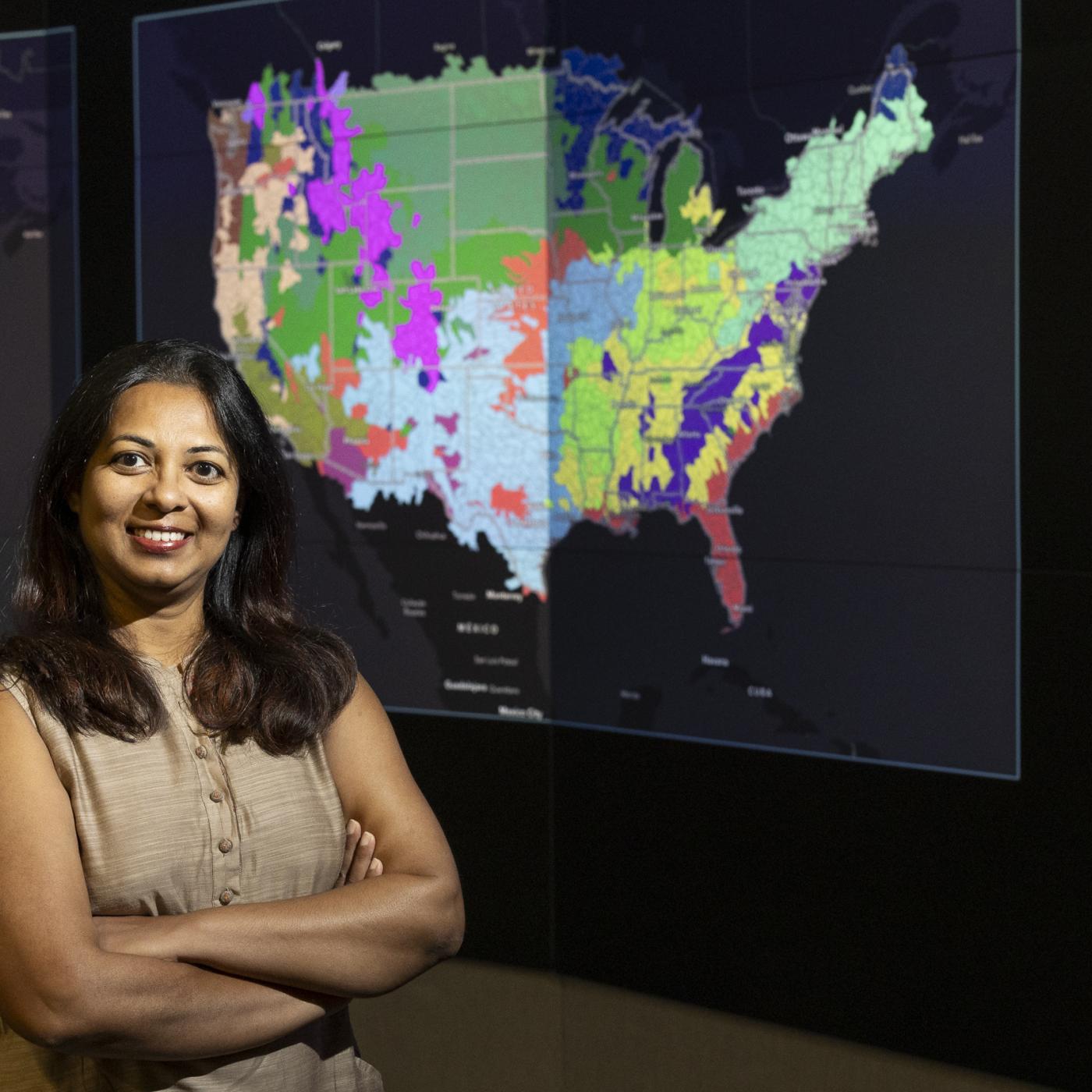
Filter News
Area of Research
- (-) Clean Energy (109)
- (-) Materials (28)
- (-) National Security (7)
- Advanced Manufacturing (4)
- Biological Systems (2)
- Biology and Environment (76)
- Biology and Soft Matter (1)
- Building Technologies (3)
- Computational Biology (1)
- Computational Engineering (2)
- Computer Science (2)
- Electricity and Smart Grid (1)
- Functional Materials for Energy (1)
- Fusion and Fission (3)
- Fusion Energy (1)
- Materials for Computing (3)
- Mathematics (1)
- Neutron Science (15)
- Nuclear Science and Technology (1)
- Quantum information Science (1)
- Supercomputing (55)
- Transportation Systems (1)
News Topics
- (-) Bioenergy (32)
- (-) Buildings (36)
- (-) Clean Water (10)
- (-) Composites (19)
- (-) Decarbonization (35)
- (-) Summit (8)
- 3-D Printing/Advanced Manufacturing (91)
- Advanced Reactors (10)
- Artificial Intelligence (24)
- Big Data (12)
- Biology (15)
- Biomedical (11)
- Biotechnology (5)
- Chemical Sciences (33)
- Climate Change (26)
- Computer Science (50)
- Coronavirus (16)
- Critical Materials (19)
- Cybersecurity (26)
- Energy Storage (86)
- Environment (69)
- Exascale Computing (3)
- Fossil Energy (2)
- Frontier (3)
- Fusion (8)
- Grid (45)
- High-Performance Computing (13)
- Hydropower (2)
- Irradiation (1)
- Isotopes (13)
- ITER (1)
- Machine Learning (20)
- Materials (95)
- Materials Science (90)
- Mathematics (3)
- Mercury (3)
- Microelectronics (1)
- Microscopy (29)
- Molten Salt (3)
- Nanotechnology (41)
- National Security (36)
- Net Zero (3)
- Neutron Science (44)
- Nuclear Energy (26)
- Partnerships (20)
- Physics (29)
- Polymers (21)
- Quantum Computing (3)
- Quantum Science (13)
- Renewable Energy (1)
- Security (15)
- Simulation (4)
- Space Exploration (5)
- Statistics (1)
- Sustainable Energy (71)
- Transformational Challenge Reactor (5)
- Transportation (71)
Media Contacts
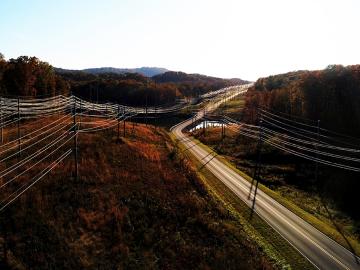
ORNL and the Tennessee Valley Authority, or TVA, are joining forces to advance decarbonization technologies from discovery through deployment through a new memorandum of understanding, or MOU.

The American Society of Heating, Refrigeration and Air-Conditioning Engineers, or ASHRAE, selected Oak Ridge National Laboratory’s Brian Fricke as one of 25 members elevated to fellow grade during its 2022 winter conference.
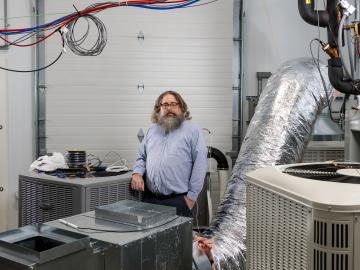
When Brian Fricke walks into a supermarket, evidence of his scientific achievement is all around in the refrigerated cases housing the fresh fruits and vegetables. As an Oak Ridge National Laboratory building equipment researcher, Fricke has a long history of making sure that produce is kept fresh in an energy efficient and environmentally sound manner.
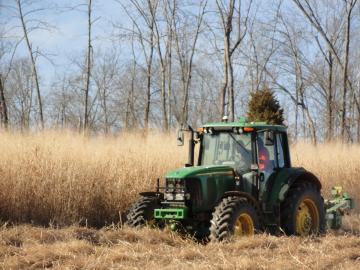
Energy and sustainability experts from ORNL, industry, universities and the federal government recently identified key focus areas to meet the challenge of successfully decarbonizing the agriculture sector
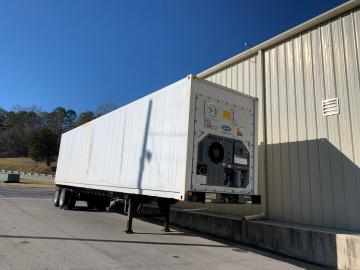
Oak Ridge National Laboratory researchers have retrofitted a commercial refrigeration container designed to ensure COVID-19 vaccines remain at ultra-low temperatures during long transport and while locally stored.
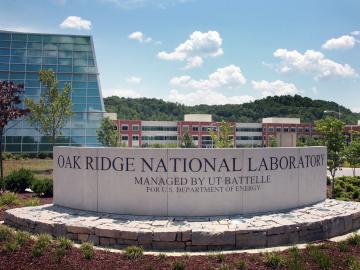
Ten scientists from the Department of Energy’s Oak Ridge National Laboratory are among the world’s most highly cited researchers, according to a bibliometric analysis conducted by the scientific publication analytics firm Clarivate.
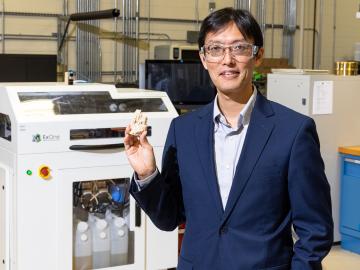
Researchers at ORNL designed a novel polymer to bind and strengthen silica sand for binder jet additive manufacturing, a 3D-printing method used by industries for prototyping and part production.
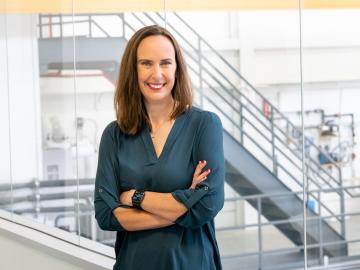
She may not wear a white coat or carry a stethoscope, but Christine Walker of ORNL spends her days diagnosing the energy health of buildings and figuring out how to improve their efficiency to achieve cost savings and reduce their carbon footprint.
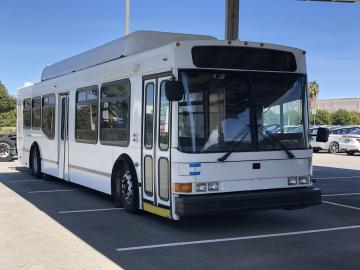
Oak Ridge National Laboratory researchers developed and demonstrated algorithm-based controls for a hybrid electric bus that yielded up to 30% energy savings compared with existing controls.
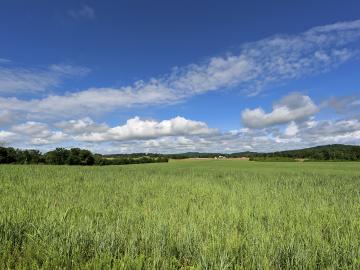
Nearly a billion acres of land in the United States is dedicated to agriculture, producing more than a trillion dollars of food products to feed the country and the world. Those same agricultural processes, however, also produced an estimated 700 million metric tons of carbon dioxide equivalent in 2018, according to the U.S. Department of Agriculture.


